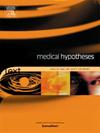Redefining the pathogenesis of Gestational Diabetes Mellitus: The cumulative impact of endocrine disrupting environmental chemicals in key metabolic pathways
IF 0.8
4区 医学
Q3 MEDICINE, RESEARCH & EXPERIMENTAL
引用次数: 0
Abstract
Gestational Diabetes Mellitus (GDM) is a common pregnancy complication with a prevalence rate of 10–14 % in India. In GDM high blood glucose level and insulin resistance is observed. Several hormones secreted from placenta during pregnancy changes the metabolic state and interferes with insulin functions and blocks insulin and increases blood glucose level/hyperglycemia. Emerging evidence links GDM to environmental exposures, particularly endocrine-disrupting chemicals (EDCs) such as Bisphenol A (BPA), phthalates, parabens, and microplastics. These EDCs impair glucose metabolism and insulin signaling through oxidative stress, inflammation, hormonal interference, and pathway disruptions, including the hypothalamic-pituitary-thyroid (HPT) axis and PI3K-AKT signaling. This paper hypothesizes that frequent EDC exposure in pregnant women might trigger HPT axis thereby increasing insulin resistance and impair glucose homeostasis increasing the risk of GDM. Supporting evidence from mechanistic and epidemiological studies highlights the need for regulatory policies and early detection strategies. Validating this hypothesis could reshape GDM prevention and management by identifying therapeutic targets and minimizing EDC exposure.
重新定义妊娠期糖尿病的发病机制:内分泌干扰环境化学物质在关键代谢途径中的累积影响
妊娠期糖尿病(GDM)是一种常见的妊娠并发症,在印度的患病率为10 - 14%。GDM患者出现高血糖和胰岛素抵抗。妊娠期间胎盘分泌的几种激素改变代谢状态,干扰胰岛素功能,阻断胰岛素,增加血糖水平/高血糖。新出现的证据表明,GDM与环境暴露有关,特别是内分泌干扰化学物质(EDCs),如双酚A (BPA)、邻苯二甲酸酯、对羟基苯甲酸酯和微塑料。这些EDCs通过氧化应激、炎症、激素干扰和通路中断(包括下丘脑-垂体-甲状腺(HPT)轴和PI3K-AKT信号)损害葡萄糖代谢和胰岛素信号。本文假设孕妇频繁暴露于EDC可能触发HPT轴,从而增加胰岛素抵抗,破坏葡萄糖稳态,增加GDM的风险。来自机制和流行病学研究的支持性证据强调了制定监管政策和早期发现战略的必要性。验证这一假设可以通过确定治疗靶点和最小化EDC暴露来重塑GDM的预防和管理。
本文章由计算机程序翻译,如有差异,请以英文原文为准。
求助全文
约1分钟内获得全文
求助全文
来源期刊

Medical hypotheses
医学-医学:研究与实验
CiteScore
10.60
自引率
2.10%
发文量
167
审稿时长
60 days
期刊介绍:
Medical Hypotheses is a forum for ideas in medicine and related biomedical sciences. It will publish interesting and important theoretical papers that foster the diversity and debate upon which the scientific process thrives. The Aims and Scope of Medical Hypotheses are no different now from what was proposed by the founder of the journal, the late Dr David Horrobin. In his introduction to the first issue of the Journal, he asks ''what sorts of papers will be published in Medical Hypotheses? and goes on to answer ''Medical Hypotheses will publish papers which describe theories, ideas which have a great deal of observational support and some hypotheses where experimental support is yet fragmentary''. (Horrobin DF, 1975 Ideas in Biomedical Science: Reasons for the foundation of Medical Hypotheses. Medical Hypotheses Volume 1, Issue 1, January-February 1975, Pages 1-2.). Medical Hypotheses was therefore launched, and still exists today, to give novel, radical new ideas and speculations in medicine open-minded consideration, opening the field to radical hypotheses which would be rejected by most conventional journals. Papers in Medical Hypotheses take a standard scientific form in terms of style, structure and referencing. The journal therefore constitutes a bridge between cutting-edge theory and the mainstream of medical and scientific communication, which ideas must eventually enter if they are to be critiqued and tested against observations.
 求助内容:
求助内容: 应助结果提醒方式:
应助结果提醒方式:


